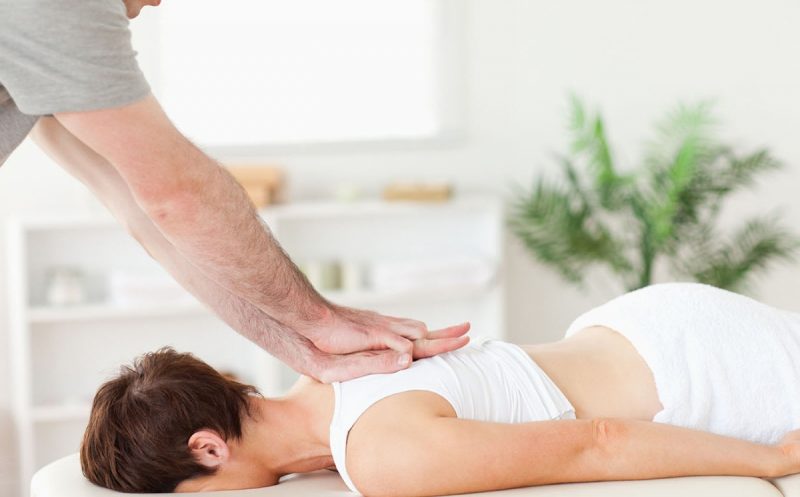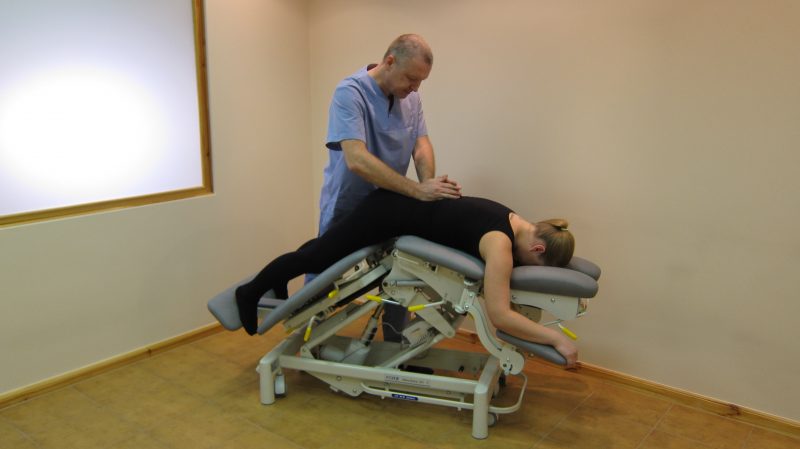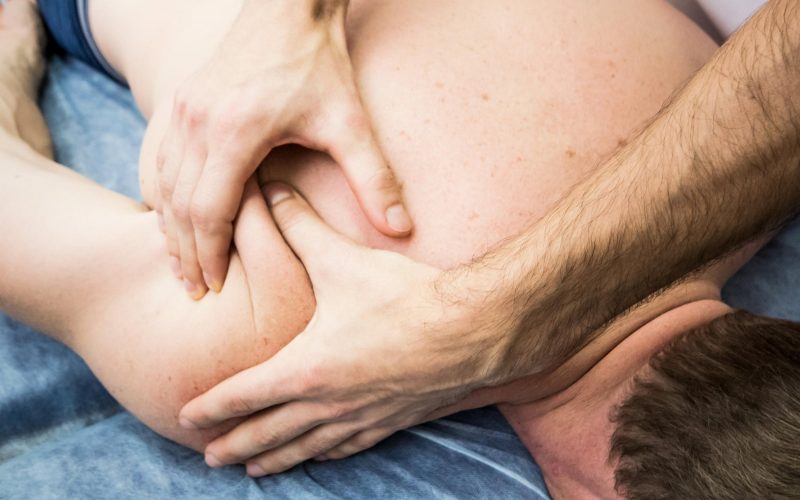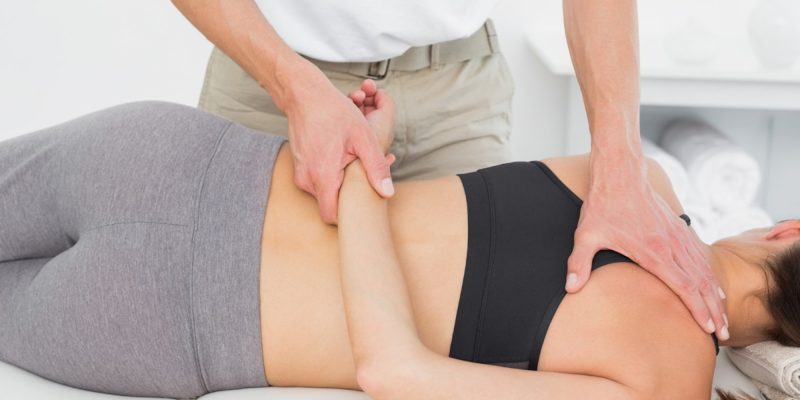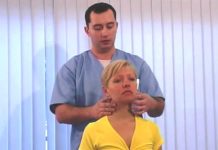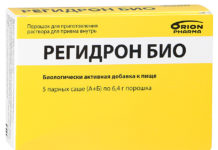Manual therapy of the spine is a technique of non-drug exposure to the patient's body. The first mention of it is found in ancient manuscripts of authorship of Hippocrates himself. For a long time this technique was not recognized as official medicine, but now qualified specialists in this field are worth its weight in gold.
Material Content:
- 1 What is manual spinal therapy
- 2 In the treatment of which diseases does a chiropractor help
- 3 Indications for use
- 4 Do you need a preliminary diagnosis
- 5 Methods and techniques of manual therapy of the spine
- 6 What happens to the body during a session
- 7 Contraindications
- 8 Manual medicine and osteopathy - what is the difference
What is manual spinal therapy
The specialist performs all manipulations only with his hands, using various techniques to influence the nerve endings. A person who is not familiar with medicine thinks that this is a kind of massage. If you observe from the side, the procedure really resembles this method of treatment and relaxation, however, the doctor does not just knead soft tissues, while stimulating receptors in the skin, but acts on much deeper structures - the skeletal system, joints, muscles of the cervical, chest and lumbar spine.
In manual therapy, there are three main areas of work:
- Peripheral - improvement of blood circulation, restoration of soft tissues, normalization of movement of physiological fluids, oxygen saturation.
- Neurophysiological - normalization of the work of nerve endings, improvement of the supply of nerve impulses.
- Psychophysiological - the impact not only on a specific (worked out) part of the body, but also on the whole organism.
The rapid appearance of the results, a small list of contraindications, the possibility of treatment without surgery and the use of medications are the main advantages of this field of medicine. Therefore, it is impossible to deny the positive effect of manual therapy.
In the treatment of which diseases does a chiropractor help
The list of diseases for which manual therapy is recommended includes:
- osteocondritis of the spine;
- arthrosis and other diseases of the musculoskeletal system;
- sciatica, pinched nerve;
- protrusion;
- muscle neuralgia;
- intervertebral hernia;
- subluxation, displacement of the joints;
- headaches and heartaches as a result of pathological changes in different parts of the spine;
- pain due to trauma.
Manual techniques help:
- eliminate pain;
- eliminate functional blockade of the spine;
- restore the normal functioning of the musculoskeletal system;
- establish normal blood circulation;
- restore range of motion in the spine;
- remove muscle cramps and tension;
- improve posture;
- correct (as far as possible) the intervertebral discs;
- reduce swelling of the soft tissues of the back;
- improve muscle function;
- Avoid surgery.
However, resorting to such treatment is possible only with the complete absence of contraindications.
Indications for use
The treatment of spinal diseases is always lengthy. Moreover, the best results are always shown by complex methods.
Manual treatment is indicated in the case of:
- periodic or persistent back pain;
- instability or displacement of the vertebrae;
- disorders of posture;
- numbness of the limbs;
- neurological symptoms;
- hernias;
- rehabilitation period after some types of injuries.
In these cases, manual therapy may work more effectively than other methods.
Do you need a preliminary diagnosis
A preliminary examination is necessary.
As a rule, the list of proposed studies may include:
- general and biochemical blood analysis;
- X-ray
- dopplerography;
- electrocardiogram;
- CT
- MRI
This is necessary in order to eliminate contraindications, to identify abnormalities, to understand which parts of the spine require special study. Based on the results of the studies, the vertebrologist decides on the feasibility of manual treatment.
At the first visit, the specialist conducts a trial manual diagnosis, carefully palpates all the vertebrae, reveals specific pain points, assesses the degree of muscle tension. Only after that an individual scheme is developed. The number of sessions and courses is determined depending on the complexity of the disease and the general health of the patient.
Due to the habit, after the first procedure, the state of health may worsen a little. This is a kind of protective reaction of the body to an unnatural intervention for it. By procedure 3-4, the discomfort should completely go away. In rare cases, small bruises or bruising may occur due to capillary rupture.
Methods and techniques of manual therapy of the spine
Methods can be divided into therapeutic and diagnostic. Therapeutic methods are used to directly affect the sore spot, diagnostic - to determine the treatment regimen.
Therapeutic techniques can be classified into three types:
- Relaxing. This technique resembles a regular relaxing massage. The patient’s body is kneaded successively in order to relax the muscles and to prepare them for more radical actions to the maximum.
- Mobilization. The main goal of these techniques is the development of diseased joints and muscles. As a result, muscle spasms are eliminated, joint mobility improves. Common techniques: shaking, traction of the spine, twisting, springing, traction.
- Manipulation. The techniques used for manipulation are similar to mobilization techniques.But the main goal is to overcome the emphasis and remove the functional unit with limited movement. Traumatic techniques such as bumps or jolts cannot be used. Most often, short but weak jerky movements in the sacrum and spine are used.
Basically, most of the techniques are performed when the patient is lying on his stomach. But sometimes, for example, when acting on the muscles and vertebrae of the thoracic region, the doctor performs extension or rotation techniques in the seated position of the patient.
What happens to the body during a session
All body systems are connected to the spine, since the spinal cord is located in it. Anxiety impulses from a diseased organ first enter the spinal cord department responsible for its functioning. As a response, nerve cells give a reverse impulse, which causes the muscle system around the diseased organ to pinched. A spasm always provokes a violation of normal circulation, which leads to further progression of the disease. The result is a vicious circle.
During the session, the specialist breaks this circle, stopping the further progression of the disease. With proper therapy, the patient should not feel discomfort, only a feeling of moderate tension or resistance in the area being worked out is permissible.
During the procedure, the patient should relax and not be afraid of the actions of the doctor. But sometimes due to severe pains, for example in the cervical spine, it is difficult to achieve complete muscle relaxation. Therapy involves the passive performance of movements, as well as direct pressure and the application of short-term efforts to the spine.
Typically, a session takes about half an hour. The procedures are carried out not daily, but with an interval of 1 to 6 days. This is necessary so that the muscles become toned gradually, and the patient does not suffer from pain and discomfort.
After treatment, the doctor may prescribe a second course. Then he will choose gymnastic exercises to perform at home and simple techniques of self-massage for already developed areas. A return to the usual way of life and violation of the recommendations of a specialist almost always leads to repeated problems.
Contraindications
Manual therapy is often much more effective than medication. Despite this, for some people this method of treatment is contraindicated.
List of absolute contraindications for manual therapy:
- any benign or malignant formations;
- recent injuries, fractures, spinal surgery;
- mental disorders;
- disturbances in normal cerebral or cardiac circulation;
- history of heart attack or stroke;
- pregnancy;
- diseases of the spine and internal organs in the acute stage.
Relative contraindications give the doctor the freedom to choose in which case the benefits of manual therapy exceed the harm.
Manual medicine and osteopathy - what is the difference
The similarity of osteopathy and manul medicine is only in the use of hands as the main tool of influence. Otherwise, they are very different. Manual therapy is more aimed at eliminating symptoms and a purely mechanical effect, and osteopathy - at eliminating the hidden causes of the disease and the inclusion of self-regulation mechanisms. To put it more understandably, the chiropractor works with his hands specifically on the sore spot, and the osteopath corrects the situation through other muscles and joints. The first technique is contraindicated for children and people aged, the second is recommended to everyone.
The main thing is to find a good specialist, whose work is positively answered. A highly qualified manual therapist or osteopath can relieve the patient’s condition in a matter of minutes.
While unprofessional actions will not only not help, but also lead to undesirable complications - the occurrence of hernias, displacement of the vertebrae, fractures and other problems.
It is not so easy to find qualified specialists. Known to the people, "chiropractors" in their healing use many methods and techniques of this field of medicine, but they often do it intuitively and not always correctly, without taking into account contraindications and other subtleties.
Manual therapy is not a panacea, but a powerful and effective method of treatment in the hands of a competent specialist.


